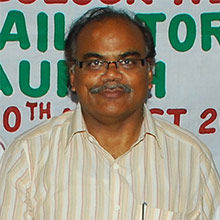In the last 15 years, from 1997-98, handloom budget totaled 3,686.58 crores, while the total textile budget (inclusive of handloom) totaled 38,702.99 crores. Thus, the average percent of handloom in the textile budget remains low at 9.53 percent.
There are no new schemes for the handloom sector.
While the handloom sector has been crying hoarse over the rise in yarn prices, the allocation for Mill Gate price Scheme has increased by a mere 1.60 crores over the previous year allocation of 54 crores. For 2011-12, the allocation is 55.60 crores. The handloom sector invests more than 25,000 crores, in silk and cotton yarn, across the country every year.
Rise in prices has increased the cost of production suddenly by 30 to 50 percent. Mill gate price scheme, with all its lacunae, does not impact or influence the yarn prices at all. They do not reduce the burden on the handloom weaver. The government should do a scale assessment and invest more in the Mill gate price scheme (at least `1,000 crores), and correct the distortions in its delivery.
The Government proposed to provide `3,000 crores to 15,000 handloom cooperatives, for debt repayment, benefiting 3,00,000 weavers.
This is very small, a mere 6%, as there are more than 50 lakh handloom weavers (as per government figures). Independent estimates show that there are more than 1 crore families.
This does not respond to handloom weavers who are outside the cooperative fold. As per the Planning Commission, only 15-20 percent of handloom weavers are covered by the handloom cooperatives. More than 80 percent of handloom weavers depend on private money lending, and a minuscule percentage on bank loans, through Artisan Credit Cards, PMRY, and SGRY schemes. They are not covered by this debt repayment scheme. At the field level, each handloom weaver family's debt ranges from 20,000 to 1,50,000. Most are in debts below `50,000. There is no scheme or approach to reduce their loans or increase their access to institutional loans. Credit availability, to the handloom sector, through NABARD, is decreasing every year.
Government has also proposed reduction in import duty on raw silk (not thrown) from 30 to 5 percent.
This is huge reduction, which does not help domestic sericulture farmers, silk reeling and twisting industry. It also seems to be an off-hand decision, than well planned keeping interests of every stakeholder along the silk supply chain. Also, the stipulation that this reduction is only for raw (not thrown) helps only a particular section of powerloom and mill producers, who are geared for silk-based readymade garments, based in Uttar Pradesh and Tamilnadu. This reduction would help only Chinese silk, which is not used, in the form of import, by handloom weavers.
In fact, India requires about 25-30,000 metric tonnes of silk yarn for its domestic silk industry, while the production is only about 16,000 metric tonnes. Handloom sector, which is a major producer of silk sarees, caters to a major part of this demand. In the last one year, silk yarn prices have shot up by more than 150 percent. It has completely debilitated the silk-based handloom production.
This shortfall is essentially because of the neglect of sericulture and diversion of lands under sericulture. Sericulture farmers do not get good market prices, and lack effective market infrastructural facilities. Silk reeling and twisting industry also has not grown because of withdrawal and reduction of government investments. In fact, in Ramanagara area, near Benguluru, in Karnataka, more than 70 percent of the silk reeling and twisting units have closed down, in the last five years, because of this neglect.
Often, the problem is simple confusion: which department has to respond to their needs. At the central level, silk is the area of Ministry of Textiles, while at the State level; it is with the Agriculture department. In Andhra Pradesh, responsibility of silk cooperatives keeps rotating between department of handlooms and textiles and department of sericulture like a football. Central Silk Board is independent, under Ministry of Textiles, which has no field staff to respond to the needs of the industry.
Also, the problem is about reduction in allocations and gross neglect of the silk supply chain, which supports more than 1 crore families. In budget 2011-12, allocation for Central Silk Board has been reduced from `453 crores to `429 crores. This would have an impact on the silk production, even taking for granted the inefficacy of CSB in responding to the needs of silk industry.
There is overall reduction in government allocations for three fibres: silk, cotton, jute and wool.
- Budget for Wool Development Board has decreased to `14 crores from Rs.16 crores.
- For Cotton Technology Mission, the budget has decreased drastically from Rs.141 crores to `0 crores (zero)
- For Procurement of cotton by CCI has reduced from `1233 crores (revised) to `200 crores. Last year allocation was `244 crores, and in 2009-10, government has spent about `635 crores.
- For Jute, the budget allocation has been reduced from `104 crores to `83 crores.
Thus, draft National Fibre Policy seems to be in operation, even before its approval either by the Cabinet or the Parliament. For each of the sectors, which provide employment to lakhs of families, the budget allocation is below `100 crores. In comparison, a single institution, National Institute of Fashion Technology gets an allocation of `167 crores, an increase from `108 crores (revised).
Summarily, the Union budget 2011-12 and its allocations:
1. Does not respond to rising yarn prices, and the consequent loss of employment, penury, poverty and suicides among handloom weavers
2. Does not increase allocation for Mill Gate Price Scheme
3. Reduction in import duty on raw silk (from 30 to 5 percent) does not help handloom weavers
4. Does not contribute reduction in debts either of handloom cooperatives, or of handloom weavers- the latter being the most critical aspects.
5. Does not have any new or innovative scheme to respond to the current crisis caused by the present and past budget allocations.
6. Reduction of allocations to natural fibres, which increases their market price, in comparison with man-made fibres.
The author is Independent Textile Analyst










Comments